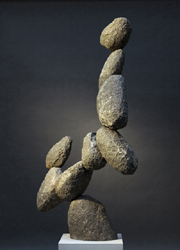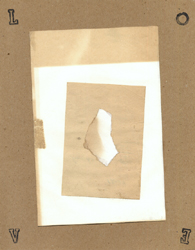September 4th - October 9th, 2010
Reception: September 11th, 2010 5-7PM
Concurrently, the gallery will present an exhibition of collages by George Herms. Coming out of the Beat Generation of the 1950s, Herms is recognized -- along with Ed Kienholz, Wallace Berman and Bruce Conner -- as a leading figure of California Assemblage. His work combines aged, stained, and rusted detritus, always rubber stamped with the four letters, L-O-V-E (the E printed backwards). As the critic Robert L. Pincus observed, the stamps are “a linguistic hieroglyph, as it were, of his ambitions for art. Collective judgment deems ugly those things Herms recycles as beautiful. That restorative act, in some small way, is analogous to his hope, perhaps implausible and undoubtedly visionary, that art can serve as catalyst for purging the human heart of hate.” The collages in this exhibition are a result of Herms sifting through boxes of his papers that were being catalogued for the Getty Research Institute. The discarded envelopes, blank sheets of thin cardboard, and other scraps of mail were covered with patterns of pale brown and tan acid staining. Herms reassembled the “damaged” remains into subtle layers of tone and shape, which sometimes include a gallery return address or the void of an envelope window.

